-
 +15 +4
+15 +4Intel Nervana Neural Network Processor for AI
Intel recently announced it’s advancement in the cognitive and Artificial Intelligence (AI) and neural network realm. The pioneer in the silicon chips reveals its plans to ship industry’s first silicon for Neural Network Processing (Nervana Neural Network Processor) before the end of this year.
-
 +11 +1
+11 +1MS-DOS variant PC-MOS/386 reborn as open source
Want a blast from your floppy disk past? PC-MOS/386, a 30-year-old MS-DOS clone operating system, is back as open source.
-
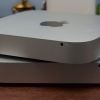 +13 +3
+13 +3The Mac mini isn’t dead yet, says Tim Cook
More than 1,000 days have passed since Apple updated its Mac mini hardware. Since then, Apple has launched the Apple Watch, AirPods, the retina MacBook, and the Touch Bar MacBook Pro. Meanwhile, the Mac mini has existed in a state of arrested development. You'd be forgiven for considering the possibility that the product has been living its last days. But in an e-mail to an Apple customer today, Apple CEO Tim Cook said the Mac mini isn't going anywhere.
-
 +19 +2
+19 +2The newest AlphaGo mastered the game with no human input
AlphaGo just leveled up. The latest version of the computer program, dubbed AlphaGo Zero, is the first to master Go, a notoriously complex Chinese board game, without human guidance. Its predecessor — dubbed AlphaGo Lee when it became the first computer program with artificial intelligence, or AI, to defeat a human world champion Go player (SN Online: 3/15/16) — had to study millions of examples of human expert moves before playing practice games against itself. AlphaGo Zero trained solely through self play, starting with completely random moves.
-
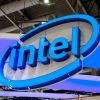 +14 +3
+14 +3Intel plans to ship its first-generation Neural Network Processor by the end of the year
Intel’s hardware for accelerating AI computation is finally on its way to customers. The company announced today that its first-generation Neural Network Processor, code named “Lake Crest,” will be rolling out to a small set of partners soon to help them drastically accelerate how much machine learning work they can do.
-
 +15 +4
+15 +4Google's first mobile chip is an image processor hidden in the Pixel 2
One thing that Google left unannounced during its Pixel 2 launch event on October 4th is being revealed today: it’s called the Pixel Visual Core, and it is Google’s first custom system-on-a-chip (SOC) for consumer products. You can think of it as a very scaled-down and simplified, purpose-built version of Qualcomm’s Snapdragon, Samsung’s Exynos, or Apple’s A series chips. The purpose in this case? Accelerating the HDR+ camera magic that makes Pixel photos so uniquely superior to...
-
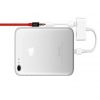 +17 +4
+17 +4Apple is really bad at design
Let me just rip this band-aid off... By Joshua Topolsky.
-
 +5 +2
+5 +2One-Way Salesman Finds Fast Path Home
The real-world version of the famous “traveling salesman problem” finally gets a good-enough solution. By Mark H. Kim.
-
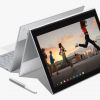 +24 +5
+24 +5Google Pixelbook: the high performance Chromebook
The way we use technology has changed so much over the past 10 years. We live online. We use tons of apps every day. We create and collaborate more than ever, and we’re constantly jumping across all our devices to get things done. But while the way we use technology has changed, our laptops haven't really kept up. They don't run many of the apps we use and love on our phones. They're not as portable as tablets. And they’re not always as versatile and helpful as they should be.
-
 +1 +1
+1 +1The Coming Software Apocalypse
A small group of programmers wants to change how we code—before catastrophe strikes. By James Somers.
-
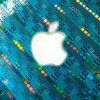 +18 +5
+18 +5Apple Interested in Developing ARM-Based Mac Processors and iPhone Modems in House
Apple is continuing to expand manufacturing efforts related to the production of its own chips, according to a new report today by Nikkei, which stated that the company aims to "better compete" in the artificial intelligence field and reduce reliance on major suppliers like Intel and Qualcomm. Nikkei's sources said Apple's interest lies in building "core processors for notebooks, modem chips for iPhones, and a chip that integrates touch, fingerprint and display driver functions."
-
 +27 +9
+27 +9Google quantum computer test shows breakthrough is within reach
The idea that quantum computers can do things that regular ones cannot isn’t proven. But Google thinks it knows a problem only a quantum computer can solve
-
 +22 +4
+22 +4Move towards 'holy grail' of computing by creation of brain-like photonic microchips
Scientists have made a crucial step towards unlocking the "holy grail" of computing - microchips that mimic the way the human brain works to store and process information. A research team, including Professor C. David Wright from the University of Exeter, have made a pioneering breakthrough by developing photonic computer chips - that use light rather than electricity - that imitate the way the brain's synapses operate.
-
 +17 +4
+17 +4Microsoft’s new coding language is made for quantum computers
When one of the first personal computers, the Altair 8800 came along in 1976, Microsoft was ready with a programming language, Altair BASIC. It wants to be equally prepared when quantum computers go mainstream, so it has unveiled a ne programming language and other tools for the futuristic tech at its Ignite conference. You'll still need to understand Qubits and other weird concepts, but by integrating traditional languages like C# and Python, Microsoft will make it easier to do mainstream computing on the complex machines.
-
 +18 +9
+18 +9University of Tokyo pair invent loop-based quantum computing technique
Japanese scientists have invented an approach to quantum computing that renders a far larger number of calculations more efficiently than existing quantum computers. Under the new method, many pulses of light, each carrying information, are allowed to go around in a loop circuit indefinitely. The circuit performs multiple tasks, switching from one task to another rapidly through instant manipulations of the pulses.
-
 +6 +1
+6 +1Structure
Beyond the picnic-table crisis. By John McPhee.
-
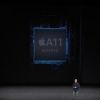 +18 +3
+18 +3With iPhone 8, Apple's Silicon Gap widens as the new A11 Bionic obliterates top chips from Qualcomm, Samsung & Huawei
Official benchmarks posted by Geekbench show that Apple's A11 Bionic delivers a huge jump in performance over last year's A10 Fusion used in iPhone 7, with scores that are not just far beyond other mobile ARM competitors' latest chips, but higher than the base Intel Kaby Lake Core i5 processor Apple uses in its 13 inch MacBook Pro.
-
 +17 +3
+17 +3IBM Makes Breakthrough in Race to Commercialize Quantum Computers
Researchers at International Business Machines Corp. have developed a new approach for simulating molecules on a quantum computer. The breakthrough, outlined in a research paper to be published in the scientific journal Nature Thursday, uses a technique that could eventually allow quantum computers to solve difficult problems in chemistry and electro-magnetism that cannot be solved by even the most powerful supercomputers today.
-
 +19 +5
+19 +5How to Live Without Google
Google tracking is more pervasive than most people realize. We show you some alternatives to Google services to limit your exposure.
-
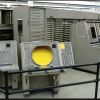 +27 +6
+27 +6Cost of iPhone X in 1957
Consider the 256 GB memory iPhone X: Implemented in vacuum tubes in 1957, the transistors in an iPhoneX alone would have cost 150 trillion of today's dollars, and one and a half times today's global annual product.
Submit a link
Start a discussion




















